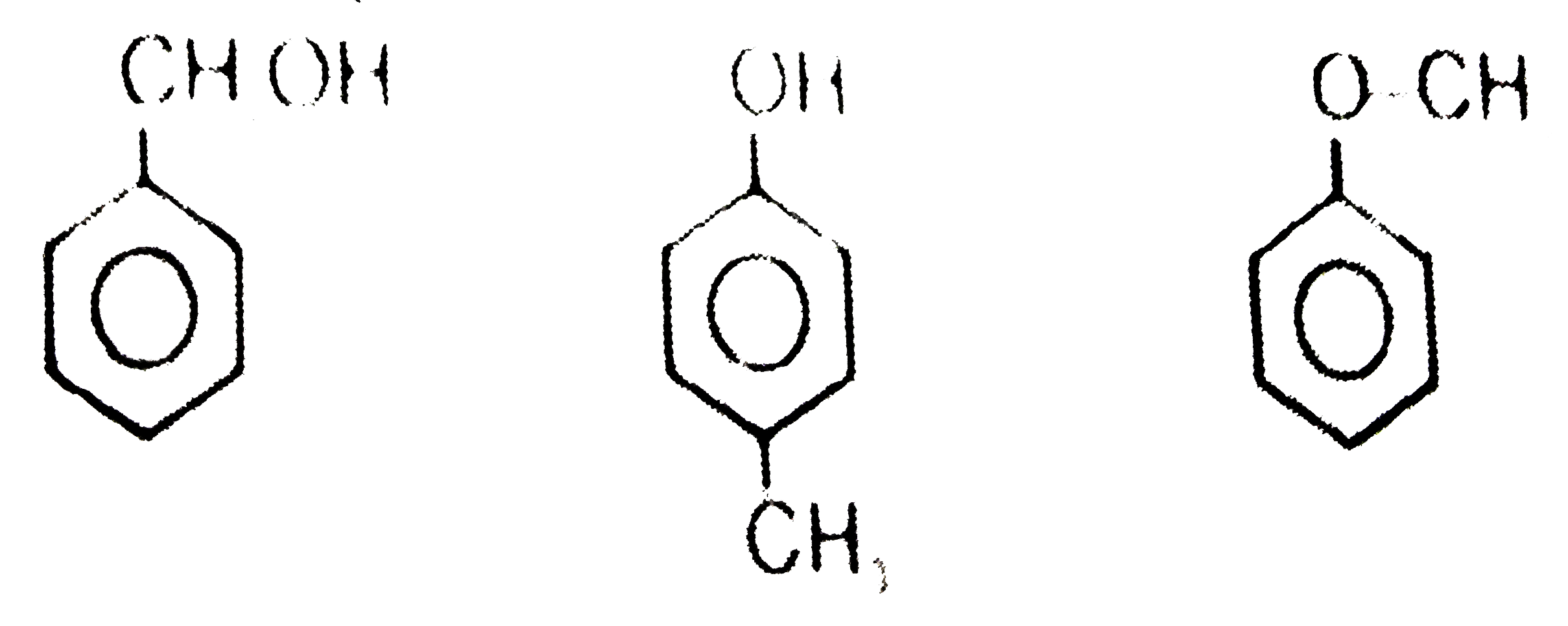Answer the following with suitable equation wherever necessary :
Suggest a reagent to distinguish acetaldehyde from acetone.
To distinguish acetaldehyde (CH₃CHO) from acetone (CH₃COCH₃), we can use Tollens' reagent, which is a solution of silver ammoniacal salt. Below is the step-by-step solution:
Step 1: Identify the Compounds
- Acetaldehyde: CH₃CHO (an aldehyde)
- Acetone: CH₃COCH₃ (a ketone)
Step 2: Understand the Reagent
- Tollens' Reagent: It is represented as Ag(NH₃)₂OH, which is a solution of silver(I) oxide in ammonia. This reagent is used to test for aldehydes.
Step 3: Reaction with Acetaldehyde
When acetaldehyde is treated with Tollens' reagent, it undergoes oxidation, and the following reaction occurs:
1. Reaction:
CH3CHO+Ag(NH3)2OH→CH3COO−+Ag+NH+4+OH−
2. Observation: A silver mirror precipitate is formed due to the reduction of silver ions to metallic silver.
Step 4: Reaction with Acetone
When acetone is treated with Tollens' reagent, no reaction occurs:
1. Reaction:
CH3COCH3+Ag(NH3)2OH→No Reaction
2. Observation: No silver mirror precipitate is formed.
Step 5: Conclusion
- Acetaldehyde gives a positive Tollens' test (silver mirror), while acetone gives a negative Tollens' test (no reaction). Thus, we can distinguish between the two compounds based on this reaction.
Summary of the Reaction Equations:
1. For Acetaldehyde:
CH3CHO+Ag(NH3)2OH→CH3COO−+Ag (s)+NH+4+OH−
(Silver mirror precipitate forms)
2. For Acetone:
CH3COCH3+Ag(NH3)2OH→No Reaction
(No silver mirror precipitate)
- Acetaldehyde: CH₃CHO (an aldehyde)
- Acetone: CH₃COCH₃ (a ketone)
- Tollens' Reagent: It is represented as Ag(NH₃)₂OH, which is a solution of silver(I) oxide in ammonia. This reagent is used to test for aldehydes.
When acetaldehyde is treated with Tollens' reagent, it undergoes oxidation, and the following reaction occurs:
1. Reaction:
CH3CHO+Ag(NH3)2OH→CH3COO−+Ag+NH+4+OH−
2. Observation: A silver mirror precipitate is formed due to the reduction of silver ions to metallic silver.
When acetone is treated with Tollens' reagent, no reaction occurs:
1. Reaction:
CH3COCH3+Ag(NH3)2OH→No Reaction
2. Observation: No silver mirror precipitate is formed.
- Acetaldehyde gives a positive Tollens' test (silver mirror), while acetone gives a negative Tollens' test (no reaction). Thus, we can distinguish between the two compounds based on this reaction.
1. For Acetaldehyde:
CH3CHO+Ag(NH3)2OH→CH3COO−+Ag (s)+NH+4+OH−
(Silver mirror precipitate forms)
CH3COCH3+Ag(NH3)2OH→No Reaction
(No silver mirror precipitate)
Topper's Solved these Questions
- ALDEHYDES,KETONES & CARBOXYLIC ACIDS BOOK - VMC MODULES ENGLISHCHAPTER - ALDEHYDES,KETONES & CARBOXYLIC ACIDS EXERCISE - EXAMPLE 1
19 Videos
- ALDEHYDES,KETONES & CARBOXYLIC ACIDS BOOK - VMC MODULES ENGLISHCHAPTER - ALDEHYDES,KETONES & CARBOXYLIC ACIDS EXERCISE - IN-CHAPTER EXERCISE-A
10 Videos
- ALCOHOLS, PHENOLS & ETHERSBOOK - VMC MODULES ENGLISHCHAPTER - ALCOHOLS, PHENOLS & ETHERSEXERCISE - Impeccable
100 Videos
- AMINESBOOK - VMC MODULES ENGLISHCHAPTER - AMINESEXERCISE - IN CHAPTER EXERCISE H
10 Videos
Similar Questions
Answere the following with suitable equation wherever necessary
(i) suggest a reagent to distinguish acetaldegyde from acetone.
(ii) what happens when excess chlorine is hpassed through boling toluene in the presence of sublight?
View SolutionAnswer the following with suitable equation wherever necessary
(i) How can you prepare benzene from lime?
(ii) How will you convert toluene to m-nitrobenzonic acid?
View Solution
Knowledge Check
Which one of the following reagents distinguish ethylene from acetylene?
AA. Aqueous alkaline KMnO4BB. Cl2 dissolved in CCl4CC. Ammoniacal Cu2Cl2DD. conc. H2SO4
Give one chemical test to distinguish between acetaldehyde and acetone.
View SolutionWrite suitable regent to distinguish the following compounds.

View SolutionWrite suitable reagent to distiguish the following compounds.

View SolutionWhich of the following reagents can be used to distinguish Benzaldehdyde from acetophenone?
View SolutionSuggest a reagent for the following conversion.

View SolutionThe reagent which can be used to distinguish acetopheone from benzophenone is :
View SolutionThe reagent which can be used to distinguish acetopheone from benzophenone is :
View Solution
